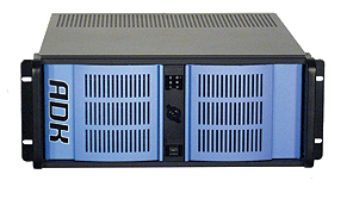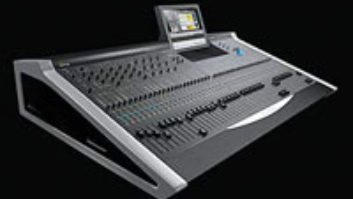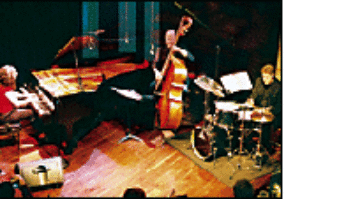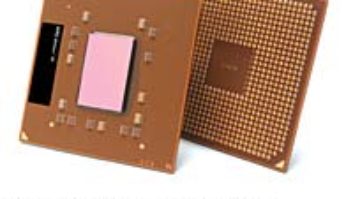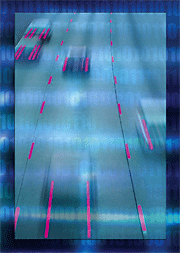

Fish get to swim, birds get to fly, computers get to run with bigger, faster processors. Laws of nature? Well, apparently some kind of law, because ever since it became possible to do MIDI sequencing on a Commodore 64 back in the ’80s, we’ve seen software and hardware tools for music and audio production playing a steady game of one-upmanship. As hardware designers gave us the capability to do more computations per second and access more memory, the software programmers quickly found ways to satisfy our creative lust to push the envelope, gobble those cycles up and ask for more!
Now we are entering the era of 64-bit computing in a big way, as chip vendors and operating systems support computing using digital words that are 64 bits long. What does it all mean for creative freedom and the eternal quest for more tracks, more processing plug-ins and unlimited numbers of mixer channels? We set out to answer these questions and more, asking some of the companies that are pioneering the latest revolution in computing. But first, a little background.
WHEN NUMBERS GET SERIOUS
In the simplest analysis, it comes down to how big a number you can represent with a single digital word. We know that binary digits or bits (ones and zeros) are strung together to create bytes or digital words of varying lengths. It’s simple binary math: The largest number you can represent with a given word length is pretty straightforward to calculate and goes something like this:
28 = 256
216 = 65,536
220 = 1,048,576
224 = 16,777,216
232 = 4,294,967,296
264 = 18,446,744,073,729,551,616
Anyone who has used a sampler or recorded digital audio knows that the more bits you use to represent an audio sample, the more dynamic range you can represent. Dynamic range is proportional to word length, and frequency response is proportional to the sampling frequency. (As seen in the Nyquist theorem, simply stated, you have to sample at a rate at least twice the desired highest analog frequency component to avoid aliasing.) For digital audio, word length translates to dynamic range like this:
16-bit = 96 dB
24-bit = 144 dB
32-bit = 192 dB
64-bit = 384 dB
As the range of human dynamic perception is approximately 120 dB from silence to the threshold of pain, why would we possibly need a dynamic range more than that offered by 24-bit? Isn’t 64-bit just overkill? Not really. When digital processing for audio occurs, the math involved can produce some very large values as coefficients are computed for processing digital audio signals. The enemies in this case are overflow, truncation and rounding errors that can creep in when the intermediate values to be stored are bigger than the registers available to store them. Thus, one of the great benefits of 64-bit internal processing is that a high degree of audio precision can be maintained through successive rounds of computation. In short, you can maintain truer fidelity even when a lot of audio processing is going on because you can finally do the math!
Another benefit of 64-bit processing is that there is significantly larger direct-addressable memory space than 32-bit designs. In fact, a 64-bit architecture expands total addressable memory space from 4 gigabytes to more than 18 billion GB (more than 18 Exabytes). Only 2 to 3 GB of cache memory are directly addressable on 32-bit Windows systems, while 64-bit systems can access up to a Terabyte of cache memory.This means that large data sets (tracks, plug-ins, samples, etc.) can be loaded entirely into memory, reducing the need for slower disk access. In many of the new 64-bit chip designs, an improved chip architecture can handle parallel processing tasks more effectively as improved 64-bit processors perform more instructions per clock cycle and have the ability to process these instructions in parallel. Finally, increased bus and I/O bandwidth allow for faster and wider data throughput. Simply put, you can do a lot more and do it faster and with more precision than ever before in the history of computing.
IT’S IN THE CHIPS
All of this is a definite plus given the fact that high-resolution audio formats with higher sampling rates and bit depths are becoming more and more the norm for professional production work. According to Texas Instruments’ worldwide DSP marketing manager Gerard Andrews, “Digital audio has been on a migration path to higher sampling rates over the past few years. Note the increase of products that tout the 192kHz sampling frequency. This move means audio signals are sampled at rates much higher than they traditionally have been. At the same time, the audio processing occurring at very low frequencies allows for more realistic bass — lows that are felt more than heard. This processing of low-frequency, high-sample-rate audio signals really drives the need for 64-bit audio.”
Texas Instruments has been working in the 64-bit arena for some time, says Andrews. “For more than five years, TI has offered native support for IEEE 754 Double-Precision [64-bit] computing in our floating-point DSPs. This support can be found in the C671x, C672x, DA6xx and DA7xx families of processors today. Naturally, in addition to the DSPs, we’ve also had support for the 64-bit floating-point math in our development tools.”
The two top companies making general-purpose CPU processors are Intel and Advanced Micro Devices (AMD). AMD was out of the gate first, but both have announced and are now shipping 64-bit designs.
Denise Latscha, senior product marketing engineer at Intel, notes that the company offers 64-bit computing support in Pentium processors across its market performance segments. “All of the Intel Xeon and Intel Itanium processors shipping today support 64-bit computing for the workstation and server markets.” She adds that the Intel EM64T (Intel Extended Memory 64 Technology) is a key technology that helps bring 64-bit computing to digital media. Many of its benefits can be applied to 64-bit computing in general:
- It supports the WinXP Pro x64 OS and access to more than 4GB RAM.
- More operations can be processed in RAM, resulting in less data caching to/from your hard drive, enabling faster performance. This also helps applications do more in real time, which is critical for complex audio filter algorithms and large data sets.
- For high-end audio, 64-bit computing helps enable a deep sonic palette and more lifelike and interesting compositions — more tracks, more simultaneous plug-ins and virtual instruments.
- This enables fewer multiple passes and longer sequences when layering 3-D or film/video for special effects creation.
- Increased headroom for processing HD video, enabling improvements in both workflow speed and quality.
Intel has been rolling out its 64-bit technology by working directly with companies that are upgrading the capabilities of their systems to handle the new processors. One example of such collaboration is Intel’s work with Cakewalk. According to Ron Kuper, Calkwalk VP of engineering, “With 64-bit computing, processors are getting a quantum jump in performance, and we’re using it to give SONAR users more power, flexibility and creative potential.” Kuper says that 64-bit technology accelerates the performance of SONAR X64 Technology Preview by up to 30 percent, “for noticeably more tracks, more effects, more synths — deeper and more interesting songs and mixes.”
Apple’s 64-bit G5 processor was one of the earliest 64-bit designs to find common use in the personal computer market. But issues surrounding the AIM (Apple, IBM, Motorola) Alliance’s ability to respond quickly enough to future demands for processor speed improvements and lower power consumption led Apple to surprise its users this year by announcing a move to 64-bit Intel processors. According to industry sources, the Mac OS, which is based on BSD Unix, has a high level of hardware abstraction that is making the transition relatively painless and will allow Apple to begin shipping new Macs based on the Intel architecture in the middle of 2006. Developers working with early transition systems based on a 3.6GHz Intel Pentium 4 processor say the performance with Mac OS is already impressive.
We also caught up with AMD director of digital media and entertainment Charlie Boswell to explore how that company approaches 64-bit design and how this development affects the music and audio content creation world. “Our Opteron processors use the balanced AMD64 Direct Connect Architecture,” he says. “The processors directly connect to memory, I/O and other processor cores, yielding a very fast architecture that’s balanced so the data traffic doesn’t need to slow down. When loading audio tracks or plug-ins, audio creators don’t suffer the same bottlenecks as in a slower performing architecture.” Boswell points out that a balanced architecture allows the support of more plug-ins, more tracks and is more robust. You can run the processor closer to full capacity without running into performance issues that can produce audio problems.
Boswell contrasts AMD’s architecture to what he sees as limitations in some competing designs: “[Some] other processors have a front-side bus where the two processors connect together and I/O and memory share the same wires. That means there are latencies introduced when you load the system.” He makes the analogy that sharing I/O and memory between the two processors is similiar to L.A. traffic on a Friday afternoon: You may be in a speedy Maserati, but you’re restricted on how fast you can go by the rest of the traffic on the freeway.
Given the impressive performance of the new CPU processors, will audio companies still find a use for specialized DSP hardware to accelerate audio processing? Texas Instruments’ Andrews still sees a great deal of utility for the DSP in the pro audio world. “I think that there should always be an opportunity for DSP hardware in the audio world,” he says. “In addition to having some advantages in DSP latency performance versus the CPU, plug-in developers face less piracy issues when working on specialized hardware. Also, due to advances in FireWire and USB technologies, specialized DSP hardware can be developed to work with laptops, allowing customers to bring workstation-level performance to an average laptop in a convenient, portable package.”
Andrews sees the advantages of 64-bit DSP extending beyond the high-end pro workstation and into the consumer market. “One example where we see a benefit from this technology is in the home theater market, where bass management is important. As customers become more aware of these capabilities, 64-bit floating point will be leveraged into more and more audio applications.”
WHAT ABOUT THE AUDIO?
On the audio manufacturing side, developers are beginning to take advantage of 64-bit’s enhanced computing capabilities. Yamaha has been on the leading edge of audio technology for quite some time. Mix spoke to Athan Billias, director of marketing technology products, regarding upcoming 64-bit support for Yamaha. He says that the company’s collaboration with Steinberg (Yamaha purchased Steinberg earlier this year) and its own networking products will be the first places the influence of 64-bit architectures can be seen. Billias added that Steinberg software products already support 64-bit architecture, and at the end of August, Yamaha will release a 64-bit streaming driver for mLAN.
The advantages will be quite tangible for end-users. “The biggest advantage of 64-bit architecture is the ability to support extremely large sample libraries,” Billias says. He goes on to note that “Steinberg and Yamaha have always been focused on supporting cross-platform capabilities and all major operating systems, so 64-bit operating systems are part of our overall strategy. The benefit of dual-processor chips [supported in the August release of Cubase SX3.1 and Nuendo 3.1] may have the most dramatic effect on the DAW end-user experience.”
Cakewalk made its x64-bit product debut earlier this year at Winter NAMM, where the company announced SONAR x64, touting it as “the first truly native 64-bit host DAW, along with the availability of a free x64 technology preview.” According to Cakewalk’s Steve Thomas, more announcements will come at this month’s AES. “We’re unveiling SONAR 5 Producer Edition, including both native 64-bit and 32-bit versions of our flagship DAW in the same box,” he says. “We’re also releasing a white paper authored by Cakewalk CTO Ron Kuper titled Benefits of Modern CPU Architectures for Digital Audio Applications.
Improved performance will enhance creativity, says Thomas. “Users will experience overall performance gains in the 20 to 30 percent range; more RAM for use with samplers, virtual instruments and processors and 64-bit double-precision-processing providing increased dynamic range and sonic clarity over current 32-bit floating-point and 48-bit fixed-point — based systems.” Thomas explained that SONAR’s 64-bit mix engine is accessible even on 32-bit computers; knowing that 64-bit and 32-bit platforms must coexist in the market for some time to come, Cakewalk will ship both 64-bit and 32-bit versions of SONAR 5 together in the same box. Thomas adds that support for the migration extends even further: “To assist customers making the transition to x64 systems, we are unveiling our new BitBridge™ technology, which allows existing 32-bit VST effects and instruments in SONAR’s 64-bit environment.”
YOU WANT OS WITH THOSE CHIPS?
Chip development isn’t the only driving factor; operating systems are following in stride. Microsoft’s Windows XP Professional x64 Edition touts the same advantages noted earlier in this article. And scheduled for release in 2006, Windows Vista operating system (once code-named Longhorn) should provide many new features to the world’s most popular operating system, not the least of which is full 64-bit processor support.
On the Mac side, the upcoming move to Intel chips should bring big changes; in the meantime, Apple offers machines and operating systems that support 64-bit. The new Power Mac G5 line operates with two 64-bit G5 processors reaching top speeds of 2.7 GHz. Mac OS X “Tiger” adds a full 64-bit operating system to Apple’s machines. According to Apple, a key compatibility feature for Tiger is software distribution with what Apple terms “fat binaries.” This lets applications contain 32- and 64-bit binaries within a single file. According to Apple’s Website, “Using fat binaries, network administrators distribute a single version of an application to all users, regardless of their system capabilities. Once installed on a user’s system, the fat binary automatically selects the appropriate code for the system without user intervention. This greatly simplifies administration, installation and distribution of applications.”
YOUR ROCKET IS READY
The transition from ubiquitous 32-bit processing to the world of a 64-bit processor in every PC and a 64-bit OS coursing through the new silicon will take some time. As with all technology transitions, there are a lot of moving parts out there — device drivers, software apps, hardware peripherals, communications buses and more — that have to be rendered 64-bit — friendly. For some time to come, 32-bit and 64-bit will live a (hopefully) peaceful coexistence in a hybrid world. To the extent that the manufacturers have done their homework and engineered a bit-migration strategy into their offerings, it should be a fairly smooth ride.
Once you haul that Maserati of creativity mentioned earlier away from the traffic and onto the open road of fully compliant hardware, software apps and operating systems, you’ll come closer to the Holy Grail of creating at the speed of thought. Now the question is, can your creative impulses keep up with the rocket placed at your disposal? And are you ready for it?
Ron Franklin is a frequent contributor to Mix and is the director of media products for Tarari Inc. He can be reached at
[email protected].

Cakewalk offers suggestions to help you when assembling a computer from scratch or simply to make better-informed decisions when computer-shopping. Click here to read the recommendations they’ve assembled from software test engineers, tech support personnel and software developers.
Download Cakewalk’s latest White Paper, “Benefits of Modern CPU
Architectures for Digital Audio Applications,” here.
